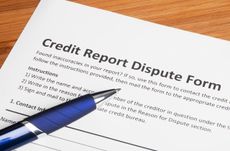Costs, Benefits of a Generator
Many insurers will give you a discount of about 5% on your homeowners premium for installing an automatic standby generator.

Our electricity was off for days last summer after a big storm. I’m thinking about buying a home generator so that I’m prepared this year. Would it be better to get an automatic backup generator or a portable unit? --W.D., Rockville, Md.
Either kind of generator will keep your appliances running in a power outage. Many insurers will give you a discount of about 5% on your homeowners premium for installing a generator -- although to get the discount, you’ll generally need to buy an automatic standby generator. Such units are powered by natural gas or propane and turn on automatically after detecting a power outage -- which not only leaves you in the dark but also could cause your sump pump to stop working (potentially leading to mold if your basement floods while your air conditioning is out, too) and your burglar and fire alarms to fail.
The most common automatic standby generator produces 17 kilowatts, which will power 16 circuits, says Roy Cranford, president of generator dealer CDS Emergency Power, in Baltimore. The unit costs about $4,000, plus about $3,500 to connect it to your electrical system and your gas or propane line, says Cranford.

Sign up for Kiplinger’s Free E-Newsletters
Profit and prosper with the best of expert advice on investing, taxes, retirement, personal finance and more - straight to your e-mail.
Profit and prosper with the best of expert advice - straight to your e-mail.
You won’t get an insurance discount for a portable generator, but portables cost a lot less and are your only option if you don’t have a gas or propane line. A 6.5-kilowatt generator costs about $800 to $1,000, says Cranford, and can supply about ten circuits -- sufficient to power most of a 2,000-square-foot house, not counting central air conditioning.
A portable generator isn’t as convenient as an installed one. You will need to roll the generator outside (to avoid carbon monoxide poisoning), fill it with gasoline, and run extension cords from your appliances and other electric devices to the generator. For about $1,000 extra, you can have a manual transfer switch installed that links the generator to your electrical panel and lets you power everything with just one cord.
Get Kiplinger Today newsletter — free
Profit and prosper with the best of Kiplinger's advice on investing, taxes, retirement, personal finance and much more. Delivered daily. Enter your email in the box and click Sign Me Up.

As the "Ask Kim" columnist for Kiplinger's Personal Finance, Lankford receives hundreds of personal finance questions from readers every month. She is the author of Rescue Your Financial Life (McGraw-Hill, 2003), The Insurance Maze: How You Can Save Money on Insurance -- and Still Get the Coverage You Need (Kaplan, 2006), Kiplinger's Ask Kim for Money Smart Solutions (Kaplan, 2007) and The Kiplinger/BBB Personal Finance Guide for Military Families. She is frequently featured as a financial expert on television and radio, including NBC's Today Show, CNN, CNBC and National Public Radio.
-
 States That Won't Tax Your Retirement Income in 2025
States That Won't Tax Your Retirement Income in 2025Retirement Taxes Several states don’t tax Social Security benefits, 401(k)s, IRAs, and pensions. But you may still have to pay state taxes on some incomes.
By Kate Schubel Published
-
 Build Your Dream Retirement With These Five Steps
Build Your Dream Retirement With These Five StepsDreaming about life after work? Turn your dreams into a concrete, actionable plan by nailing down the why, what and how of your retirement.
By Keith Wiltfong, CFP®, CIMA® Published
-
 Credit Report Error? They All Matter
Credit Report Error? They All Mattercredit & debt Don't dismiss a minor error. It could be the sign of something more serious.
By Kimberly Lankford Published
-
 Insurance for a Learning Driver
Insurance for a Learning Driverinsurance Adding a teen driver to your plan will raise premiums, but there are things you can do to help reduce them.
By Kimberly Lankford Published
-
 529 Plans Aren’t Just for Kids
529 Plans Aren’t Just for Kids529 Plans You don’t have to be college-age to use the money tax-free, but there are stipulations.
By Kimberly Lankford Published
-
 When to Transfer Ownership of a Custodial Account
When to Transfer Ownership of a Custodial Accountsavings Before your child turns 18, you should check with your broker about the account's age of majority and termination.
By Kimberly Lankford Published
-
 Borrowers Get More Time to Repay 401(k) Loans
Borrowers Get More Time to Repay 401(k) Loansretirement If you leave your job while you have an outstanding 401(k) loan, Uncle Sam now gives you extra time to repay it -- thanks to the new tax law.
By Kimberly Lankford Published
-
 When It Pays to Buy Travel Insurance
When It Pays to Buy Travel InsuranceTravel Investing in travel insurance can help recover some costs when your vacation gets ruined by a natural disaster, medical emergency or other catastrophe.
By Kimberly Lankford Published
-
 What Travel Insurance Covers When Planes Are Grounded
What Travel Insurance Covers When Planes Are GroundedTravel Your travel insurance might help with some costs if your trip was delayed because of the recent grounding of Boeing 737 Max planes.
By Kimberly Lankford Published
-
 Ways to Spend Your Flexible Spending Account Money by March 15 Deadline
Ways to Spend Your Flexible Spending Account Money by March 15 Deadlinespending Many workers will be hitting the drugstore in the next few days to use up leftover flexible spending account money from 2018 so they don’t lose it.
By Kimberly Lankford Published